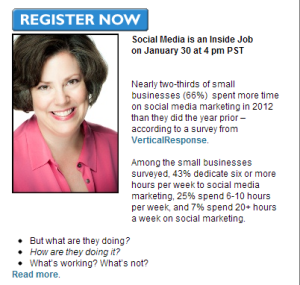 “Story is the DNA of all meaning.” – Annette Simmons
“Story is the DNA of all meaning.” – Annette Simmons
Do your appeals have undeniable power? Do you enthrall, captivate, motivate ― and drive response?
With only weeks remaining in 2016, the cavalcade of carefully crafted requests will soon commence. For most of us, they will arrive from all points, directions and media ― email, snail mail, APPs, Facebook, texts and tweets. What will grab us? And more important, what will snag the imaginations of our prospects? What will be deleted? Filed? Ignored? Dismissed? Or worse . . . unnoticed?
Some will be cloaked in gratitude. Others will lament the ubiquitous budget gap or unexpected organizational need. Still others are likely to promote a seductive donor challenge, captivating contest, new initiative, capital effort or recognition group.
But they should all have one thing in common ― a compelling story.
What’s the hook? And I’m not talking about a cheesy advertising gimmick or giveaway. The power to resonate comes from the human, emotional connection.
Big, looming, seemingly logical organizational problems ― like deficits, shortfalls and even unmet needs are just that. The organization’s problems. As communicators, we must focus on the donor’s or prospect’s needs ― they are often triggered at an imperceptible, emotional and even subconscious level.
Though Marshall McLuhan might argue, the message is just as salient as the medium in this case ― especially given the media miasma engulfing us at every turn. As I wrote in a prior post, I feel effective messaging must address the entire brain ― engaging the emotional, logical and habitual brain circuits.
Behavioral economist George Lowenstein confirms “our subconscious explains our consumer behavior better than our conscious. Ninety percent of all purchasing decisions are not made consciously.”
Working as a writer, communicator and crafter of hundreds (maybe thousands) of appeals and calls to action throughout my career to to date, I have identified a few key elements that are absolutely essential. [Where appropriate, I have changed names to protect client confidentiality
The Pain
This is probably the most important concept. And it’s personal. What is the emotional state ― or discomfort your message can resolve for the prospect or donor? According to brain theory, everything begins with an emotional nudge, which connects to the cerebral cortex or executive function of making a decision. And the most important thing about framing a powerful request or appeal is articulating the pain in an intimate, relatable, visceral way. Compare these two.
“I was deployed in Saudi Arabia on 9/11 . . . And I can still hear the screams . . .”
Corporal John Ray’s* battle-weary voice cracks and catches in his throat.
“We were in combat overnight . . . and we weren’t prepared,” says the slight, sandy-haired U.S. Army veteran ― as he slowly brushes a single droplet of sweat from his brow.
“The nightmares never stop, but I just wish I had enough to eat . . . “
(versus)
“Veteran hunger is a growing problem in America . . . And their struggle is significant.”
The top copy is weaving a human story that’s drawing the reader into a specifically defined conflict ― not a daunting global cause that is difficult to quantify ― or feel. More to the point, one tells and one shows.
The Problem
The next step is the core challenge or problem. How does this pain manifest, and how does your organization or operation contextualize the issue you are addressing? Get granular. Explain why is your mission is significant, and why should we care? Again, it’s important to construct a very personal, human narrative. Here’s an excerpt form a letter:
It was January 2007. I was on a mission trip that rattled me to my very marrow ― and ultimately changed my life forever. We brought more than 285,000 nutritious meals for hungry, struggling children who were barely surviving in the war-torn squalor.
Shockingly, the meals ran out too soon. There were just too many suffering, vulnerable girls and boys like Maribel . . . in such dire need.
We simply did not have enough to go around . . . All I could do was stand there and weep. So, I had to do something.
Are you hooked? And better yet . . . are you wondering about the next three components? Well, you’ll have to stay tuned for these and other stories. It’s a real cliffhanger . . .
In addition to the five pillars of a great appeal, there are many other components of your content concoction. Of course, we must artfully integrate urgency, all calls to action, testimonials/success stories, various digital platforms, and customer relationship management (CRM) interfaces. But start with this formula. Start with the IMPACT ― and you will definitely turbo-charge your results.
If you’d like to learn more, sign up below. Tell me about your project. Also, watch for the next installment. Maximize your appeal. It all starts with the story of one.
 To say Twitter is hot is quite an understatement. In a world thirsty for leadership, everyone seems to be following these days. In the past week, I have attended some interesting presentations on the Internet and making sense of social media for business. It’s a reality and a resource—no doubt, but there is still rampant confusion about how to optimize it. I am very interested to know how you view social media and use it.
To say Twitter is hot is quite an understatement. In a world thirsty for leadership, everyone seems to be following these days. In the past week, I have attended some interesting presentations on the Internet and making sense of social media for business. It’s a reality and a resource—no doubt, but there is still rampant confusion about how to optimize it. I am very interested to know how you view social media and use it.













